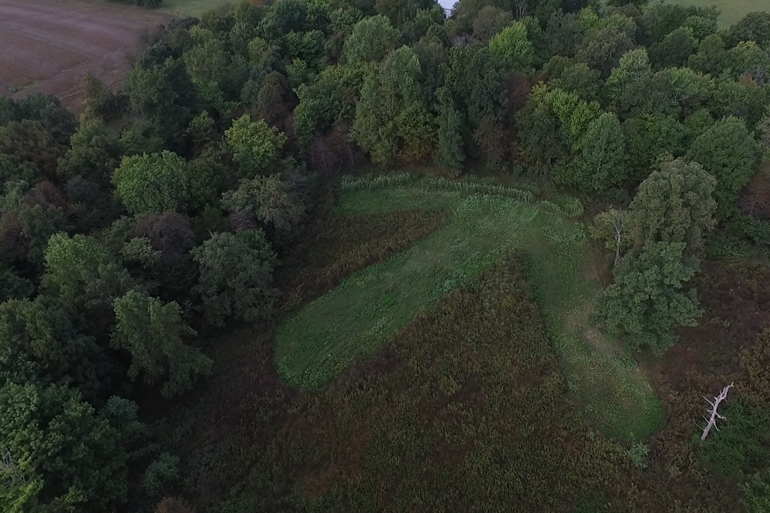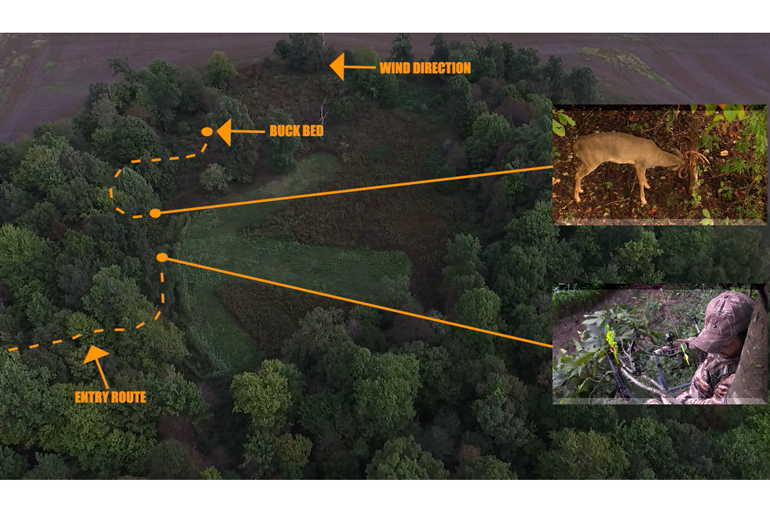Imagine consistently killing Pope & Young bucks on 10 acres or less. Think it’s impossible? Guess again. When it comes to good hunting properties, you don’t need a big tract of land. You just need the right parcel. Sometimes, the best ones are also the smallest.
My family and I used to have permission on one such property. It was about 10 acres, and it had everything deer needed to survive: food, water, cover and minimal human intrusion. It served as an excellent example that deer hunters can experience success on small properties. If that’s a concept that piques your interest, consider these components when building or searching your 10-acres of deer hunting heaven.
Bedding Cover
Having good bedding areas is the most important factor on small properties. This is generally in shorter supply than food sources, which deer can get on neighboring properties after dark. Instead of creating maximum food on your property, focus more on quality bedding. After all, beds are the places they spend most legal shooting hours — not within major food sources. It’s better that deer sleep on your land, than to feed on it.
When managing bedding cover, ensure there are different stages of habitat. You don’t want just big hardwoods or grassy cover. Have a variety of old growth and early successional habitat. I prefer a 50:50 ratio of each.

The majority of plant life should serve a cover or food-based purpose for whitetails. Most deer are going to bed in the thickest available habitat. In an ideal world, about half of the property should offer that, and it should be located in the center. It needs to be thick, nasty, grassy early successional growth. The outer portions should be timber, but still have relatively thick undergrowth, too.
On this property, we left the northern half of the area intact as bedding cover, and that’s generally where the bucks bedded. Does and fawns usually bedded in the timber around the property’s perimeter, mostly on the eastern and southern sides.
Food Sources
This property had hard mast (oaks), soft mast (persimmons), browse, and food plots (brassicas, peas and wheat). We planted the food plot within the southern half of the grassy, CRP-like section. It had something different planted in each of the three fingers. This improved the food source diversity and lengthened the period of time deer could benefit from it.
Around the perimeter of the tract, on the neighboring lands, was a lot of ag. This served as the primary food source for the local deer herd, but they generally wouldn’t enter these fields until after dark. During daylight hours, they generally bedded, fed and watered within the boundaries of the small tract we hunted.
In areas where it’s legal, baiting can also be part of the equation. If it’s legal, and you feel that it’s ethical, don’t feel bad about dumping a bag of corn in the middle of a small farm. We did. There’s only so much you can do when hunting small tracts of ground.
Water Sources
If it doesn’t already have a water source, such as a pond, creek or stream, add that component. This isn’t as difficult as some believe. While creating a pond is the best long-term solution, smaller DIY waterholes serve the same purpose.
I commonly create these with no more than $20 — more on how to accomplish that here. All you need is some plastic, a small swimming pool or water trough, and a shovel. Dig an appropriately sized hole, free it of rocks and jagged points, line it with thick plastic, insert the pool, and backfill around it.
Access, Orientation, and Proximity
It’s hard to kill deer if you can’t access hunting spots without alerting them. It needs quality, low-impact entry and exit routes. This minimizes hunting pressure and allows for a greater number of sits before pressure begins to change the behavior of resident deer.
It also needs to have the right north-south-east-west orientation for bedding cover, food and water sources in relation to the prevailing winds. This increases the huntability of preferred stand locations.
In areas with varying topography, remember that winds aren’t always as predicted by weather apps and sources. Terrain impacts wind flow. For example, if the wind is out of the north for a general area, a ridge might funnel it in such a manner that it blows out of the northwest. Know how properties in question are affected.
Finally, these 10 acres need to be located within or close to other really good deer habitat. This will increase the carrying capacity of the local deer herd and improve the overall hunting.
Real-Life Case Study
When setting up small properties, it’s very important to manipulate line of travel as much as possible. Every quarter-acre must count, serve a purpose, and be maximized for huntability. As such, we oriented the food plot to encourage and foster preferred behavior and hung a treestand just south of the vertex to intercept deer along that travel route. It worked perfectly.

After the pre-season prep, we monitored the food plot with one trail camera, and a stud showed up in late July. He remained daylight active throughout summer and into deer season. My uncle, Ben Honeycutt, and I moved in to hunt this buck in late September. The first sit didn’t produce a sighting of it, but the second one did.
On the day of the hunt, we had an easterly wind, which was perfect for our primary entry route. Fortunately, the buck bedded about 80 yards northeast of the stand location. He ended up circling to the west, paralleled our entry route, and entered the food plot with his nose into the wind.
We watched this buck makes rubs, tend scrapes, and groom itself at 5-20 yards for more than 30 minutes. My uncle made a great quartering-away shot. The arrow went through both lungs and lodged in the off-side shoulder. We recovered the buck dead in its bed two hours later, just after dark.
You couldn’t ask for a better early season or pre-rut deer hunt. We experienced it by permission on just 10 acres. You can kill really good deer on very small properties, and this hunt was proof of that.








